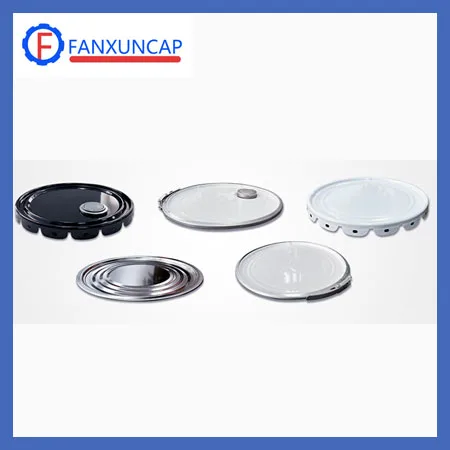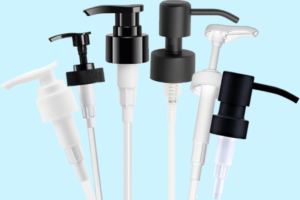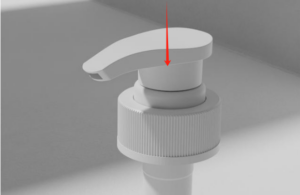If you’ve ever wondered how to make a durable and reliable tin can, then this essential guide is for you. In this article, we take you through all aspects of tin can components and provide an in-depth look at the various manufacturing techniques used in tin can production, including cutting, forming and sealing. Understanding these processes will give you a complete understanding of how tinplate cans are made and why they are one of the most popular choices for packaging a variety of goods.


Manufacturing process of tin can components
Tin cans are manufactured through a series of precise and intricate processes. The first step in the manufacturing process is cutting the tinplate sheets into the desired size and shape. This is typically done using high-speed cutting machines that ensure accuracy and efficiency. Once the sheets are cut, they are shaped into can bodies using specialized equipment. The edges of the can bodies are then curled to create a smooth and safe finish.
After the can bodies are formed, the ends are attached using a seaming machine. This process involves folding and crimping the edges of the can body and the can end together to create a secure seal. The seaming process is crucial to the integrity of the tin can, as any imperfections can compromise the seal and lead to leakage or contamination.
The importance of durability of tin can packaging
Durability is a key factor in the success of tinplate can packaging. Tin cans are commonly used to store and transport a variety of products, from food and beverages to chemicals and cosmetics. The durability of tinplate cans ensures that the contents are protected from external factors such as moisture, air and light, which can cause spoilage or degradation.
Production materials
One of the major contributors to the durability of tin cans is the materials used. Steel and aluminum are the most commonly used materials for the production of tin cans. Steel cans are known for their strength and impact resistance, making them ideal for packaging goods that require extra protection. Aluminum cans, on the other hand, are lightweight and corrosion-resistant, making them a popular choice for beverages.
Inner coating
In addition to the material, the inner coating of the tinplate can also plays a vital role in ensuring durability. These coatings protect the contents of the can from direct contact with the metal, preventing chemical reactions that could affect product quality. These coatings also block moisture and oxygen, further extending the life of the can.
Types of tin can components
Tin cans are made up of multiple components that work together to provide a sturdy packaging solution. The main components of a can include the body, can and seams. Each component has a specific function that contributes to the overall durability and reliability of the package.
The tank is the main container for holding products. It is usually cylindrical in shape and is made of a hollow tube made from a single piece of tinplate. The body provides the tin can’s structural integrity, ensuring it can withstand handling and transportation.
The ends of the tin are responsible for sealing the container and keeping the contents safe. There are two types of lids commonly used for tinplate can packaging: easy-open lids and traditional lids. The easy opening is equipped with a pull tab or tear strip for easy access to items. Traditional ends, on the other hand, require a can opener to open.
The seam of a tin can is where the body and can join together. The seaming process ensures a tight and strong bond between components, preventing any leakage or contamination. The quality of the seams is crucial as any defects will compromise the integrity of the tin.
The components of a typical tin can include
- Body: The main body of the can is typically made of thin-gauge steel or aluminum sheet. The body is formed into a cylindrical shape and then welded or soldered together to create a seamless container.
- End: The ends of the can are made of a slightly thicker gauge material than the body and are typically either seamed or crimped onto the body to create a secure seal. The end can be a plain end or a more complex design, depending on the requirements of the product being packaged.
- Lid: The lid of the can is the top cover that can be opened and closed to access the contents of the can. The lid can be either a removable or non-removable design, depending on the intended use of the can. Removable lids are commonly used for food and beverage cans, while non-removable lids are used for industrial or hazardous materials.
- Seam: The seam is the joint that connects the body and the end of the can. The seam is created by rolling the edges of the body and end together and then crimping or seaming them together to create a secure seal.
- Coatings: Tin cans can be coated with a variety of materials to enhance their properties and protect the contents of the can. Common coatings include lacquers, polymer coatings, and enamel coatings.
- Labels: Labels are used to provide information about the product inside the can, including branding, nutritional information, and product details. Labels can be made from paper, plastic, or metal and are typically affixed to the body or lid of the can.
A sustainable choice for tin can components
With the growing focus on sustainability and environmentally friendly packaging, recycled materials are used in tin can production. By using recyclable steel or aluminum, you can reduce the environmental impact of your packaging and minimize the need for new raw materials. Another sustainable option is to develop biodegradable coatings for tin cans. These coatings are designed to naturally break down over time, reducing the environmental impact of discarded tin cans
Applications of tin can components in various industries
Can parts have a wide range of applications in various industries such as:
In food industry
Tinplate cans are commonly used to package canned fruits, vegetables, soups and sauces. The durability and protective properties of tinplate cans help maintain the freshness and quality of food, extending its shelf life.
Chemical Industry
Tin cans are also used in industries such as automotive, electronics, and industrial chemicals. In these industries, tin cans are used to package motor oils, lubricants, adhesives, solvents, and other industrial products. The durability and resistance of tinplate cans make them suitable to withstand harsh environments and ensure the safe storage and transportation of these goods.
Summarize
After reading this, you will know how much impact tin can components have on tin cans. Suitable components are not only for the sealing and beauty of the tin can, but also must use sustainable materials to contribute to protecting the environment. Contribution, understanding these basic ingredients is critical if you are a manufacturer looking for high-quality tin can products or a consumer looking to make informed choices about packaged goods. While tin cans are a reliable and sustainable packaging solution, an understanding of their components can improve the efficiency and functionality of tin can products in various industries.




